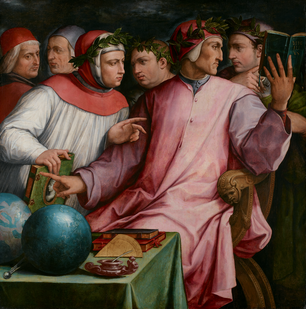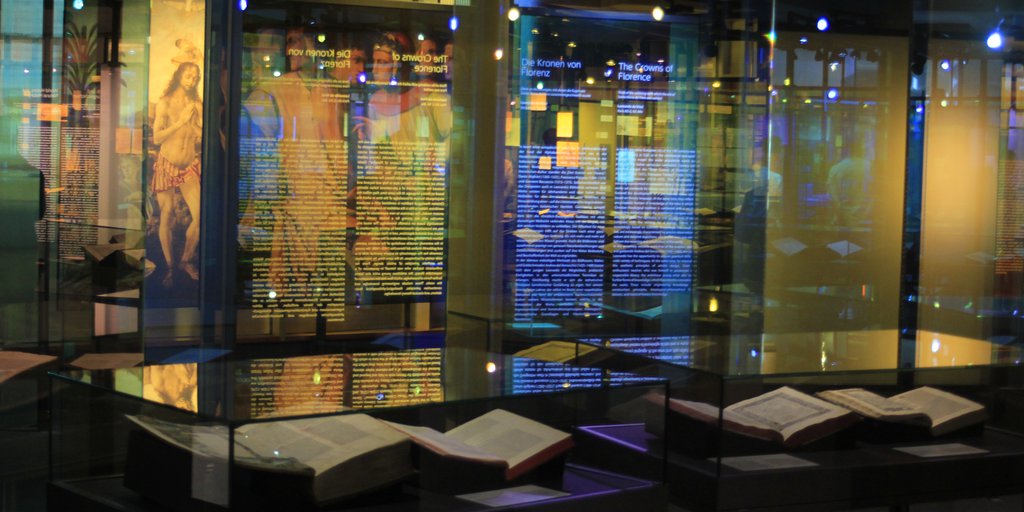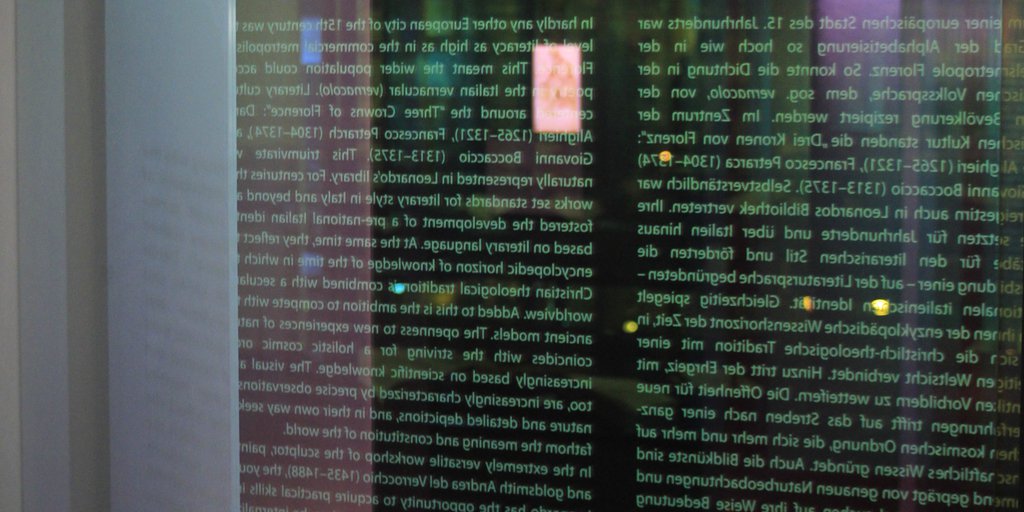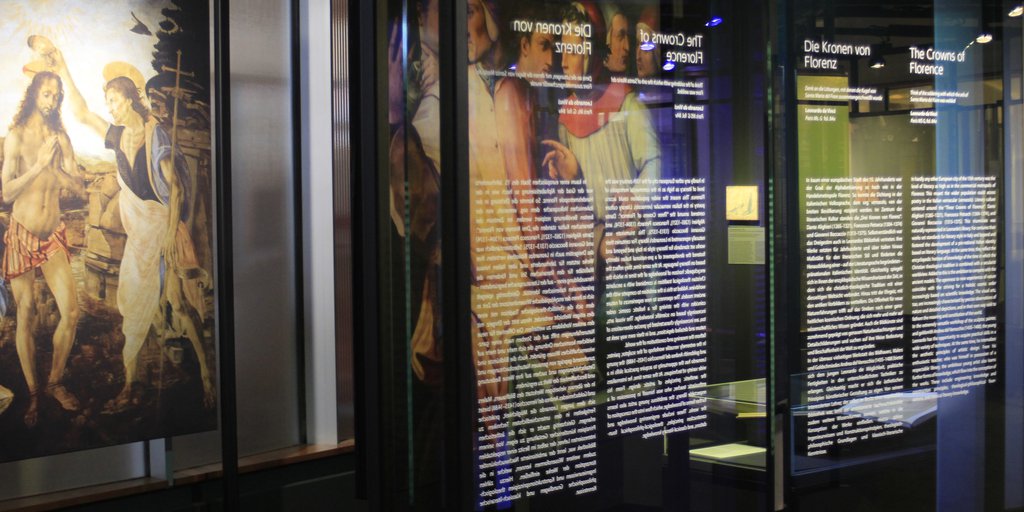
The Crowns of Florence <
Think of the soldering with which the orb of Santa Maria del Fiore was welded.
Leonardo da Vinci
Paris Ms. G, fol. 84v. Translation: Elizabeth Hughes
In hardly any other European city of the 15th century was the level of literacy as high as in the commercial metropolis of Florence. This meant the wider population could access literature in the Italian vernacular (vernacolo). Literary culture centered around the “Three Crowns of Florence”: Dante Alighieri (1265–1321), Francesco Petrarch (1304–1374), and Giovanni Boccaccio (1313–1375). This triumvirate was naturally represented in Leonardo’s library. For centuries their works set standards for literary style in Italy and beyond and fostered the development of a pre-national Italian identity based on literary language. At the same time, they reflect the encyclopedic horizon of knowledge of the time in which the Christian theological tradition is combined with a secularist worldview. Added to this is the ambition to compete with the ancient models. The openness to new experiences of nature coincides with the striving for a holistic cosmic order increasingly based on scientific knowledge. The visual arts, too, are increasingly characterized by precise observations of nature and detailed depictions, and in their own way seek to fathom the meaning and constitution of the world.
In the extremely versatile workshop of the sculptor, painter, and goldsmith Andrea del Verrocchio (1435–1488), the young Leonardo has the opportunity to acquire practical skills in a wide variety of techniques. At the same time, he internalizes the aesthetic principles of artistic design. From his enthusiastic teacher, who was himself in possession of a respectable library, the ambitious young artist also learns further forms of knowledge, which flow into the conception of the works. These include engineering knowledge and construction principles, theological-philosophical foundations, and classical literary knowledge.
Mentors <
 | 25.
Six Tuscan poets 1544 |

At the center of this fictitious poets’ gathering are three poets with laurel wreaths: the “Crowns of Florence.” First and foremost is Dante, the sommo poeta, with his characteristically sharp profile. He is shown holding a volume by his ancient role model, Virgil, who appears in The Divine Comedy as the guide in the netherworld. Standing at Dante’s right is Petrarch, also looking at Virgil’s work with interest and leaning on his own collection of sonnets, Il Canzoniere, with a medallion of his revered Laura on the cover. Boccaccio, Dante’s first biographer, is shown between the two. The triumvirate is joined on the left by Dante’s close friend Guido Cavalcanti (ca. 1255–1300), and the humanists Marsilio Ficino (1433–1499) and Cristoforo Landino (1425–1498), the author of an important commentary on Dante. The terrestrial globe, the celestial globe, and the quadrant in the foreground refer to the cosmic vision in Dante’s poetry. The painting was commissioned by the Florentine engineer Luca Martini (1507–1561)—who was also a key patron of Leonardo’s nephew, the sculptor Pierino da Vinci (ca. 1529–1553).
References
Macola, Novella. 2011. Vasari, gli Uffizi e il Duca. Exhibition catalogue Galleria degli Uffizi, Florence, 14.6.–30.10.2011. Edited by Claudia Conforti. Florence: Giunti, 138, no. II.13.











